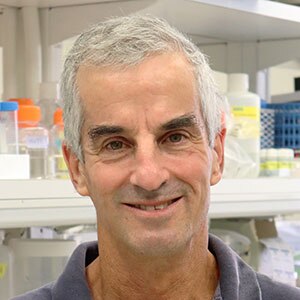Daniel C. Masison, Ph.D.

Professional Experience
- Ph.D., University of Massachusetts Medical Center, 1993
- B.S., University of Massachusetts, 1983
Research Goal
Our goal is to understand how protein chaperones and co-chaperones function at a molecular level. We want to understand their intrinsic functions and how they cooperate, regulate and fine-tune each other’s activities, as well as how their activities help maintain normal protein homeostasis and influence propagation of amyloid in cells.
Current Research
We use genetics, molecular biology, and biochemistry to identify and characterize cellular factors that influence propagation of prions in yeast. The prions we study are proteins that have a propensity to misfold and form highly structured fibrous aggregates called amyloid. Tissue pathology in many human disorders, including type 2 diabetes and Alzheimer’s disease, is associated with accumulation of amyloid forms of proteins. Prions are transmissible between strains and they propagate by recruiting the normal form of the protein and converting it into the same misshapen form as it joins the growing fiber. Prions also must replicate to be maintained in a growing population of yeast.
Hsp70 is a universally conserved and essential protein chaperone that helps proteins adopt and maintain their native structural conformations. Hsp70 activity is regulated by co-chaperones, such as Hsp40. Another protein chaperone, Hsp104, acts with Hsp70 and Hsp40 to break up and reactivate proteins that have become aggregated. The normal function of this chaperone machine promotes amyloid propagation by breaking fibers into more numerous pieces, each of which can continue to propagate the amyloid structure. We have identified several mutations in these chaperones that variously affect the prion seeding process. Determining how these mutations affect the chaperones’ activities and ability to interact with each other will help us understand the molecular mechanisms underlying the functions of this machinery.
We have also found that TPR co-chaperones, which are components of the Hsp90 machinery, can regulate Hsp70 function independently of Hsp90. We are also using our system to dissect the mechanisms of how these co-chaperones regulate Hsp70 and Hsp90 activity, and for assessing in vivo functions of Hsp90.
We have identified many mutants of various protein chaperones, in particular Hsp70 and its co-chaperones, that are revealing chaperone and co-chaperone interactions that are important for crucial cellular processes as well as prion replication. We are continuing genetic and biochemical characterization of the modified chaperones and working to define how the mutations affect their physical interactions and enzymatic activities. We are particularly interested in understanding how the various chaperones interact with each other to regulate each other’s functions and to cooperate as components of different protein remodeling machines. We also are working to understand how specific interactions among the many different components act to localize, direct, and fine-tune the chaperone machinery in its diverse cellular processes. Many of the chaperone "defects" that disrupt amyloid propagation have little or no effect on cell physiology, which points to these proteins as attractive targets for therapy in amyloid diseases. In addition to providing a better understanding of how protein chaperones function in amyloid propagation, our continued studies will provide insight into how they act in their many important roles within the cell.
Applying our Research
By understanding the molecular interactions that influence propagation of amyloid, our work might help in developing strategies to combat it.
Select Publications
- Nucleotide exchange is sufficient for Hsp90 functions in vivo.
- Reidy M, Garzillo K, Masison DC.
- Nat Commun (2023 Apr 29) 14:2489. Abstract/Full Text
- Hsp70-nucleotide exchange factor (NEF) Fes1 has non-NEF roles in degradation of gluconeogenic enzymes and cell wall integrity.
- Kumar S, Masison DC.
- PLoS Genet (2019 Jun) 15:e1008219. Abstract/Full Text
Research in Plain Language
Some proteins help other proteins fold into and maintain their normal shapes. We study how these so-called protein chaperones act in the reproduction of prions—infectious, misfolded proteins. This protein misfolding problem is related to a similar occurrence seen in many human diseases, such as Alzheimer's.
Before a protein can do its work, it folds into a 3-dimensional shape. Although most proteins fold into this shape on their own, some require the help of protein chaperones to fold properly. Chaperones guide newly made protein molecules into their correct shape and prevent improperly folded proteins from aggregation and causing toxicity. Other protein quality control processes in the cell rely on chaperones to collect potentially toxic misfolded proteins into specialized deposition sites. Mutations in chaperones strongly influence how misfolded proteins make cells sick.
We use genetics, molecular biology, and biochemistry to study prions of yeast cells to understand how chaperones modify the growth of fibrous masses called amyloids. Amyloid masses form toxic deposits that are associated with the death of tissue in many human disorders, including type 2 diabetes and Alzheimer’s disease.
Our studies suggest that altering functions of chaperones can either increase or decrease the ability of amyloid to propagate in cells. Our findings are providing information on how chaperones influence amyloid propagation and on how chaperones and proteins that cooperate with them carry out their many important functions in the cell.

